I remember watching the big horse races on TV as a child. I screamed just as hard as the next person for a beautiful horse with an exotic name that could win races and be covered in wreaths of flowers with happy owners all around, all hugging and kissing the victorious horse!
When I became more involved in the horse world, I realized the stark reality of cruelty, abuse, and death in horse sports, especially in horse racing.
Horses are beaten, drugged, shocked, and receive fatal injuries as common practice in daily races. So, I ask you, “is horse racing cruel.” Here’s why?
Why Is Horse Racing Cruel?
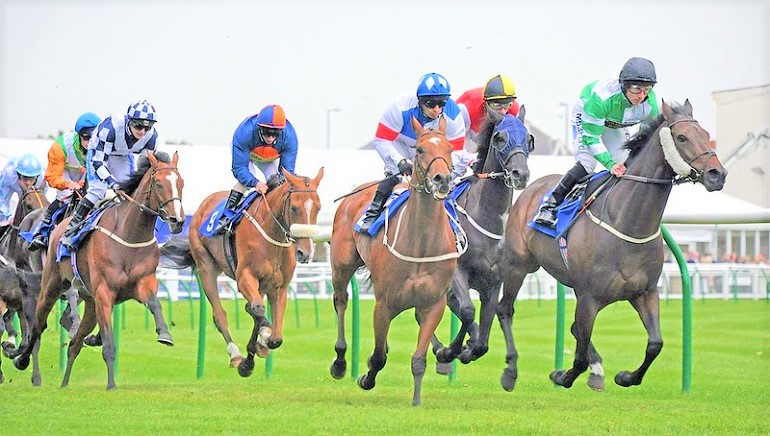
At a glance, racehorses seem in tip-top shape. With regular feeding, they appeared to be in the prime of their life until I realized that they were really just babies, with backing starting at one year of life and their first race happening when they turn two.
For many horses, the racing industry sees them as nothing more than a tool for making money. Even organized crime has dipped in racehorses. And while it was once a source of pride to state you had bred a winner, today, thousands of winning and non-winning racehorses are sent to slaughter in Canada and Mexico.
Forced to Race
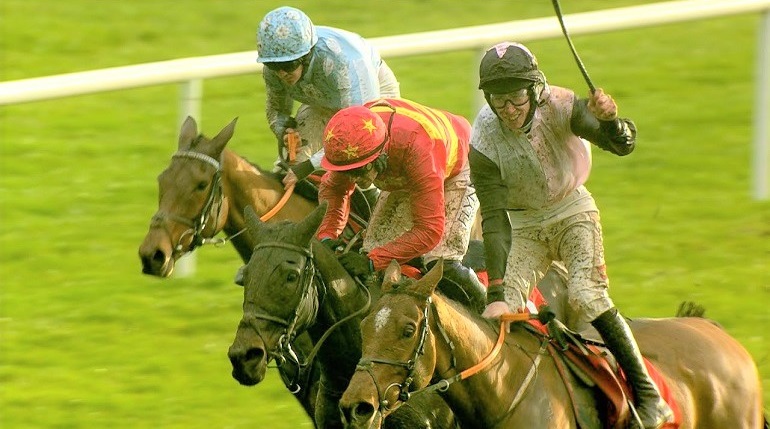
When asked whether horse racing is ethical or cruel, the response is always that horses love to race and enjoy being competitive. But horses are forced to run whether they want to or not!
The unregulated practice of “raising champions” sees horses forced through abuse and cruelty to perform, even in pain. All in the name of sport, trainers inject horses with clotting agents to prevent pulmonary bleeding and mask the pain so a horse can run just once more before retirement (aka slaughter).
So, yes, absolutely, racing is cruel!
Treating Horses as Commodities
Most equestrian sports will go to great lengths to ensure their horses are physically and mentally sound, but racehorses are commodities. The owners buy and sell to good homes or the meat man for slaughter.
Many racehorses bred for the track never actually race, and they often suffer terrible fates if they don’t show the right potential. Extreme exercise also causes irreparable damage to the horses’ bodies as they have to run the flat racing course before they are physically able to.
There are few regulations protecting horses or their right to safety and care, and the racing industry is renowned for only paying lip service to animal rights activists who protest the conditions of racehorses.
Risk of Catastrophic Injury and Death

Racehorses participate in two kinds of events: flat and jump races. In either of these, horses are pushed to the limit of their endurance and beyond, often with dire consequences.
Jockey club rules don’t do much to prevent horses from being abused and beaten with a padded whip or abusive methods used to enhance performance, such as tongue ties where the horse’s lower jaw is tied to their tongue. Horses then have difficulty swallowing as the tongue tie restricts their ability to do so.
A horse in discomfort is an animal being abused. Racetracks soon become the site of massive cruelty and suffering as horses often fall, suffer fractured legs, or have heart failure due to exercise-induced pulmonary hemorrhage, where horses can bleed out as the blood vessels in their lungs burst.
Immediate euthanasia often waits in these cases, with little consequences for those responsible who inflict pain.
Retired horses often develop ringbone and sidebone due to the compression of running at full extension of their joints before they are fully developed.
Two-year-old races carry significant risks and place excessive strain on young horses, and these immature horses end up having a much-shortened life compared to working horses, which often live into their 30s.
Thoroughbred Horse Racing Is Abusive
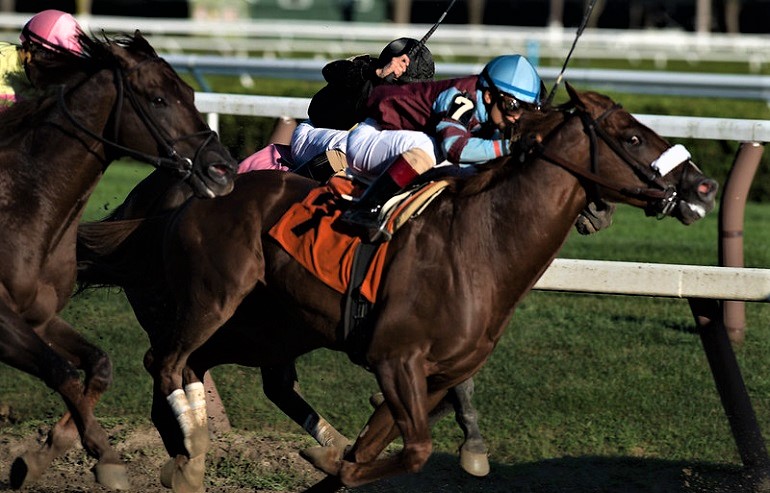
If horses enjoy racing, why do some refuse to enter the starting gate, while others are clearly confused if their jockeys fall, and therefore, they keep running—even hurting themselves?
Young horses have immature bones, excessive exercise causes severe inflammation of joints, and throughout their short careers, horses will endure bruising treatment that includes being stabled most of their lives, fed an incorrect high-energy diet, and made to run with gastric ulcers.
Racehorses start racing as two-year-olds (still babies, right?).
While doping is banned, with significant penalties, trainers still risk their licenses to make a horse run faster due to illegal drugs being given before each run. The dark side of this industry includes gambling, and the love of money carries more weight in decision-making than the horse’s welfare.
Animal welfare and race tracks don’t fit together.
Culling of Noncompetitive Animals
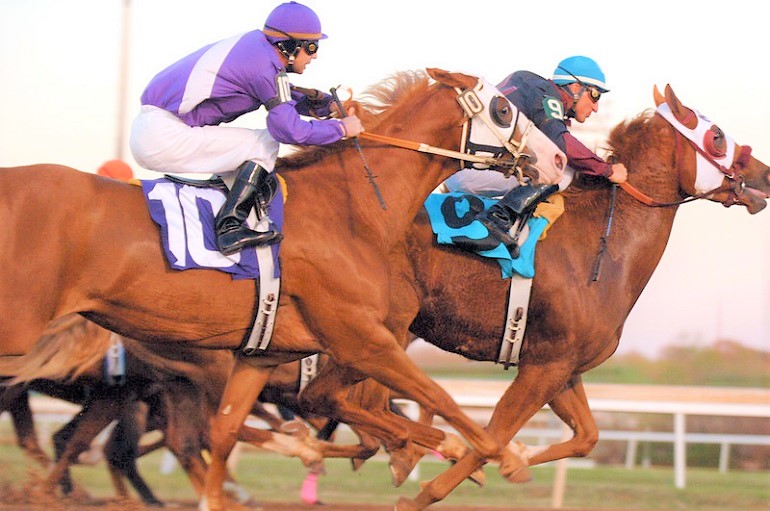
An even darker side of the racing industry is the number of horses culled without running in their first horse race. To increase the chances of breeding a winner, racing studs will have many foals each year. By the time these horses are a year old, they are backed and made to run while the owners assess their potential to win races.
If these young, immature horses don’t make the cut, they are sold without concern for their eventual end. These horses won’t receive ethical treatment when sold for meat and are treated like other meat animals. These horses soon disappear with no record of their eventual fate.
There are over 10,000 horses leaving the U.S. each year, most from the racing industry. Many trainers and owners won’t spend more money raising a horse that looks like a poor racing prospect, so they’d instead get paid for its weight (#meatmoney).
Older horses that have outrun their potential and no longer compete have limited options. If kept intact, studs may retire to become breeding prospects, as can mares or fillies. However, they often end up on a truck to slaughter if they fail to produce quality offspring in their first season.
Some animal welfare organizations work hard to rehome race horses that would be culled. Horse owners can buy these horses for the same amount as the animals would fetch for slaughter, and young horses can be retrained as sport horses.
Thoroughbred horses are ideal for racing and dressage, equitation, and showjumping or eventing—all good lives compared to life at a race track. Racing is cruel with no good retirement prospects.
Anxiety and Distress for Horses
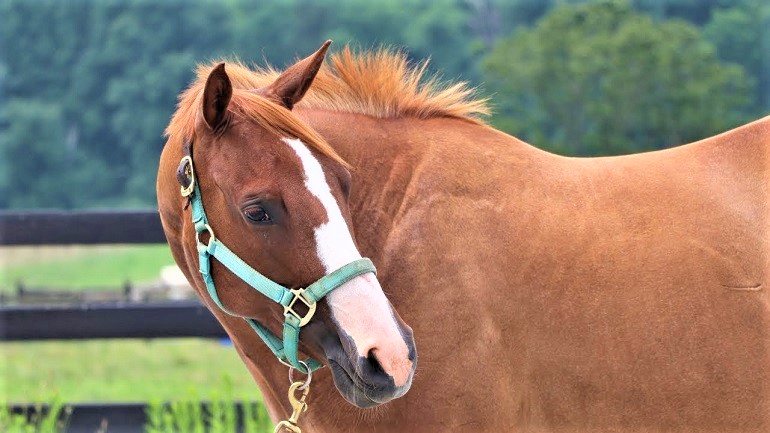
A horse is a grazing animal meant to roam extensive plains for food. Horses are also herd animals with complex social needs.
Yet, the racing industry believes racehorses carry a price tag, and these horses are isolated (to avoid injuries), never allowed to play with other horses, or engage in instinctual behavior for horses, such as mutual grooming, play, or herd dynamics.
Because racehorses live in a less natural setup, these horses soon develop stress and anxiety. This results in abnormal behavior like crib-biting (where the air is forced into their throats to fill their stomachs), weaving (where the horse rocks their neck from side to side), and aggression.
Unable to cope with the mental strain of racing, racehorses may become dangerous to their rider and veterinarians, which can result in the horse being euthanized.
Abnormal Horse Behavior
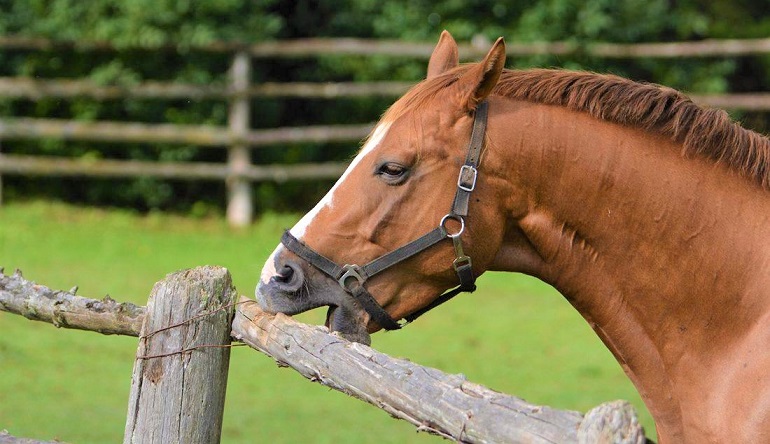
Animal welfare activists have pointed out that a horse that’s so stressed they can’t even engage in behavior that should be normal for them is clearly stressed and abused.
I have worked with several owners who bought thoroughbred horses off the track. Often, these horses have to spend months in quiet grazing situations with other horses to learn to be horses and mentally decompress before retraining for other riding purposes.
The unregulated practice of horse racing has created a world where abuse is condoned or overlooked by regulatory bodies. Because of the abuse before and during races, horses live lives of pain, sustain avoidable injuries, and endure suffering, which causes these horses to no longer behave as horses should.
Racing is cruel because horses stop being horses so people can make money!
Historical Perspective
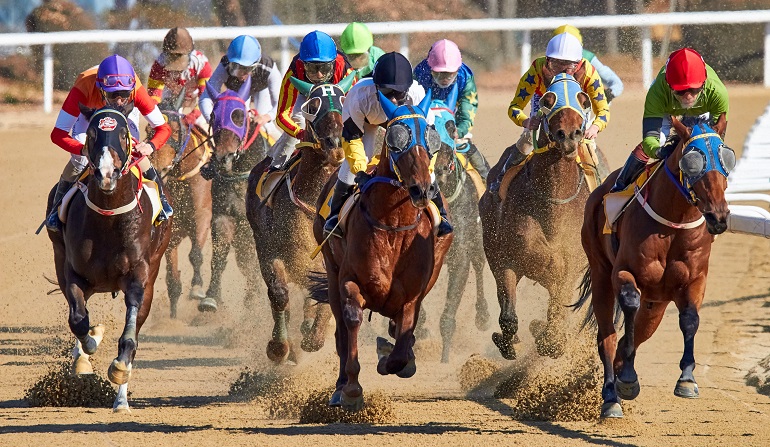
Historically, horse racing has been an integral part of a billion-dollar industry that has created more than 450,000 jobs. Races such as the legendary Kentucky Derby at Churchill Downs have become immortalized in the hearts and minds of Americans, so the chances of ending horse racing altogether are unlikely.
Perhaps it’s not necessary to take an all-or-nothing approach. After all, the horse racing industry contributes to small communities, creates jobs, and infrastructure, and acts as a tourist attraction during race season.
Facts About Horse Racing
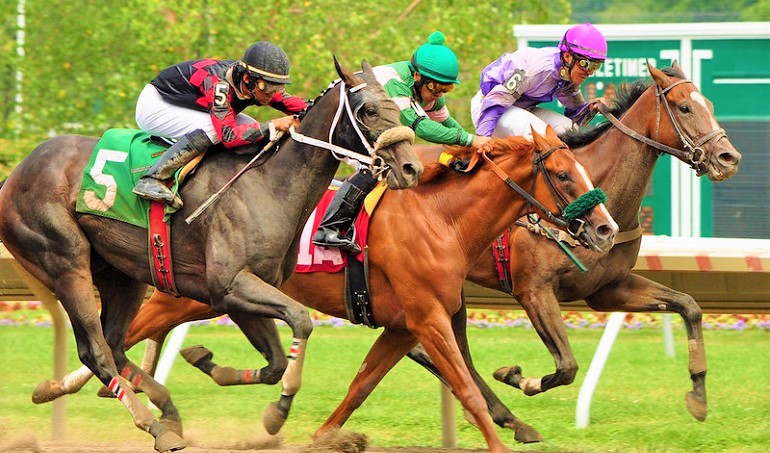
Here are a few facts that I have seen in the racing industry, which all contribute to the abuse and cruelty toward horses. These have to change if we truly love and appreciate horses’ beauty and spirit and do not lose our humanity.
Racing of Underdeveloped Horses
The Kentucky Derby is a race for three-year-olds, but this means the horse will have been enduring intense exercise and racing from the age of two (#stillABaby).
The impact of the early extreme exercise required to become race fit shows in the young horse’s body with bruising, injuries, signs of pain, lacerations of the tongue, and abnormal bone formation.
When working older horses, they have had a chance to develop fully, the integrity of the muscular-skeletal frame is much more stable, and the horse can handle the demands of race training. Many trainers abuse the young horse, and these horses start racing before their bodies are able.
Doping Racehorses
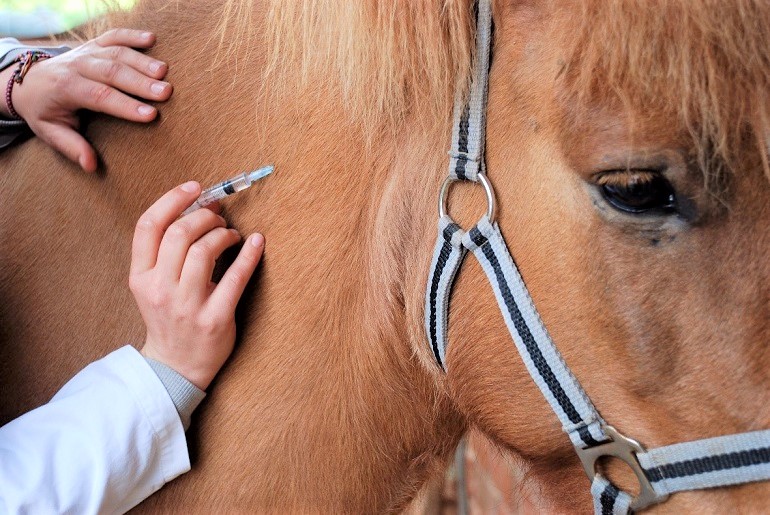
With such intense work, it’s natural that injuries will affect the horse’s health and well-being. Yet some trainers use illegal drugs to enhance performance.
Many horses are drugged to hide pain, make them run faster, and reduce exercise-induced pulmonary bleeding. Yet, the horse racing industry does precious little to prevent this, which means racing is cruel.
While the California Horse Racing Board has implemented rules against using illegal drugs and artificial methods to enhance performance, more is needed!
Artificial Living Conditions
Horses shouldn’t be kept in isolation, enclosed in dark stables for most of the day. Race horses are often kept in unhealthy environments.
Due to the unnatural living conditions, horses engage in abnormal behavior like crib-biting, weaving, and dangerous rearing and pawing during race training. These animals are suffering, and their welfare is in danger.
A Staggering Death Toll
Statistics by Australian racing found that one in every 1,000 starts dies on the track either due to injuries or pulmonary embolism. In addition to the death toll on the track, racehorses end up sent to slaughter when there’s nothing physically wrong with a horse except not being fast enough.
Painful Racing Aids
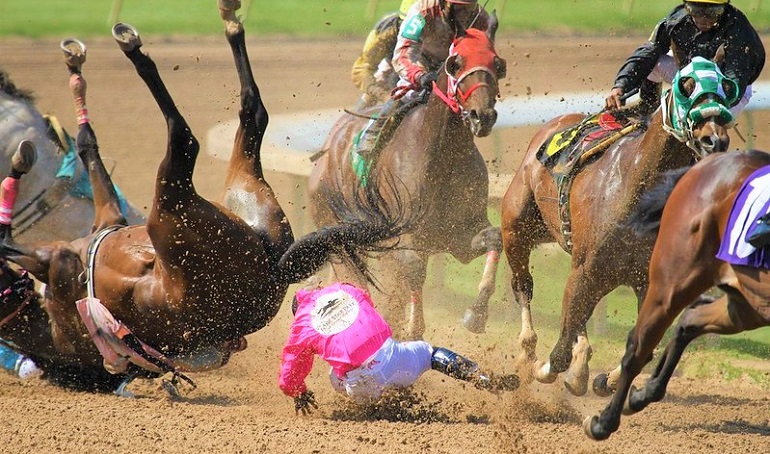
Sadly, the horse racing industry doesn’t believe in training slower and more thoroughly. Instead, artificial and painful ways are used to increase performance. These methods are unnatural and cause severe pain to the horse.
While crude methods like an electric shock to jump horses out the starting gate have been banned, other painful aids such as beating with a padded baton, and tongue ties (which cause severe lacerations and even paralysis of the tongue) to prevent the horse from getting their tongue over bitten, and pre-race injections to numb pain are still rife.
The tongue tie has caused significant pain to horses, causing difficulty swallowing and bruising the soft palate of the horse’s mouth.
In fact, jigging horses with an electric shock still happen to “boost” horses leaving the starting gate. Not to mention what possibly happens during training to “encourage” a young horse.
The fate of the Old Racehorse
While human athletes who retire get a standing ovation and a life of luxury, horse racing athletes have a shameful fate waiting at the end of their last race.
If the horse is a breeding prospect, they have some years of comfort until they can no longer deliver the next generation of potential champions. After that, their fate is the same as geldings who have raced their last race—slaughter.
Horse rescues try to assist with rehoming, but there are more horses than willing and good homes for them. Racehorses are not treated as animals needing care but as disposable commodities.
How Could Horse Racing Be Improved?
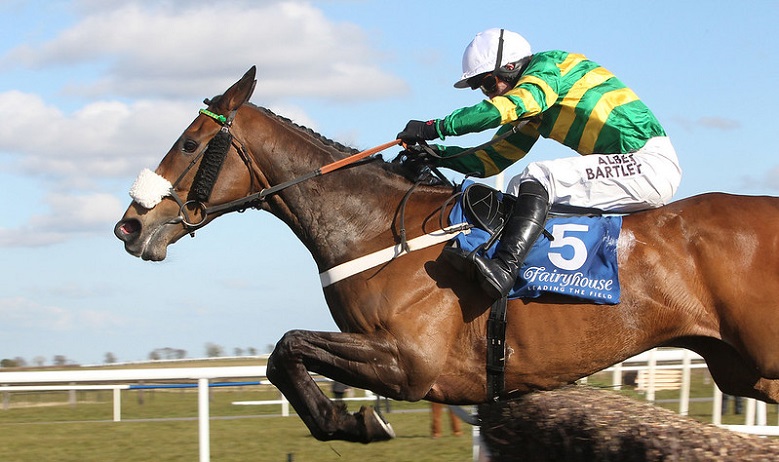
The racing industry is not all lost. It is possible to enjoy all the thrills of watching these majestic animals gallop down a track with fewer injuries and death and none of the current cruelty against racehorses.
Proper Regulation by an Independent Body
An independent body must monitor and decide what training and racing method is cruel and unacceptable. No jockey club in the horse racing industry can independently determine what is good for the horse’s welfare when it comes down to winning races and making money.
Only an independent body can implement random testing to ensure the animals used in the racing industry are cared for and not subjected to a life of pain. Cruelty can’t be tolerated, whether in horse racing or other racing, such as greyhound racing.
Better and stricter regulations should be imposed to ensure the safety of horses and jockeys so that racetracks don’t become a deathtrap for either.
Harmful Devices and Medications Should Be Banned
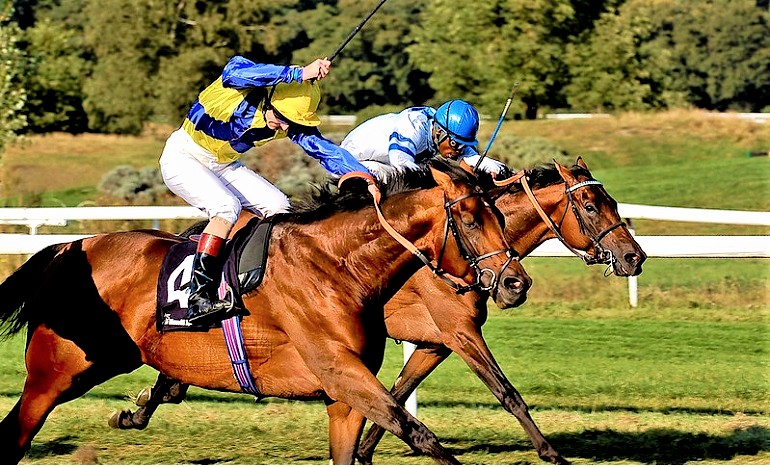
Ban tongue ties, racing whips, spurs, and other unnatural bits from training and racing. Jockeys should work with the natural skill of an animal, not force painful results just so the horse can run faster.
Veterinarians should work with inspectors to ensure no unethical administration of pain blocking and clotting agents are administered to horses to enhance performance.
If a jockey or trainer is found guilty of breaking such regulations to abuse their animals, they should be removed from the jockey club and never participate in a horse race again.
Ban on Young Horse Racing
Training horses for the racing industry should only start once the horse has formed the major bones in their body, which happens well after four years of age, finalizing at about six years old. Far from watching babies run, this would ensure that a horse race is truly between able and sound horses who enjoy racing as much as their jockeys.
Racetracks should only be open to horses above four, and no respectable jockey should participate in riding a young and unformed horse.
Transparency
Statistics of how many horses die during training and racing should be made public knowledge, and the lifeline of horses in retirement should also be a public record. The owners, breeders, trainers, and jockeys will be held accountable.
Legal Welfare Standards
Pets such as dogs and cats have legal welfare standards expected from their owners. Why can’t the same be said for horse racing animals? Stable size, turnout time, feeding, exercise, and medical needs should be regulated.
A Safe Way Out for the Old Race Horse
Creating a retirement fund for horses that have raced most of their lives would help ensure these amazing animals never end up on a slaughter truck. Breeders can easily run a retirement barn or facility to help.
How Can You Help?
People ask what they can do. Here’s what I think:
- Lobby your local lawmakers to pass laws to improve the quality of life of racehorses on and off the track.
- Encourage racetracks to enforce existing regulations, even stopping races if a jockey or trainer has shown abuse of a horse.
- Don’t keep quiet!
FAQs
Do Horses Like Racing?
Horses love to run. They love to race, but they don’t like being whipped, abused, bruised, shocked, or suffering pain.
How Many Times Are Horses Allowed To Be Whipped?
Each country and state has its own rules. Usually, on the home stretch, there is no regulation on how many times a horse may be whipped. Shoulder strikes are unlimited, while the U.K. restricts whippings with hands off the reins to seven times for flat racing (and eight for jump racing).
Is Horse Racing Legal?
Horse racing is legal in most countries, though some countries limit betting on racing.
Are Racehorses Treated Well?
Racehorses face abuse, restriction, neglect, and, eventually, slaughter.
Do Racehorses Suffer?
Horses used in racing suffer because their basic instincts are not respected. Their bodies break, and when there’s no more use for them, they are slaughtered.
Conclusion
I won’t ever watch another racehorse die on a track because I boycott horseracing, greyhound racing, and bullfighting. When will humans start to respect and love animals instead of sipping their mint juleps at the track and placing their bets?


